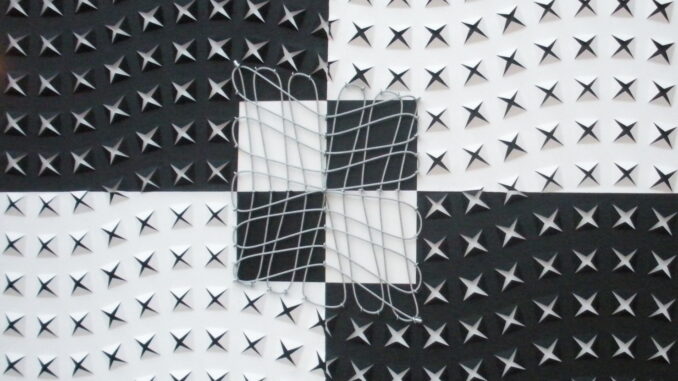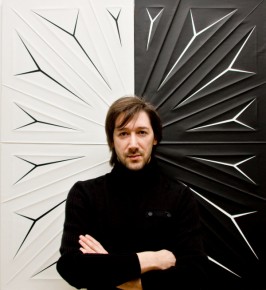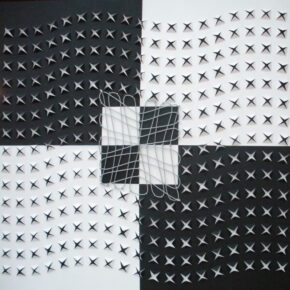

We met in London in a very sunny morning while you were exploring the city’s art galleries landscape. How did you find it? What differences have you noticed in comparison with Taranto, the city where you live and work?
London is a city were different tendencies cohabitate, from the architectonical tradition to the extreme structures that look at the future. To an artist, walking through London’s streets is food for the mind: artistically enlightening. I found myself confronted with artists of the highest level both in terms of concepts and of quality and this has pushed me to set new challenges for myself.
Your work goes beyond the two dimensions to give a sculptural character to the canvas. Do you consider your artworks to be inspired by Lucio Fontana and Enrico Castellani’s practice? Are they your masters?
The idea of cutting canvases was born with Lucio Fontana. But while his cut was a matter of gesture, and was therefore imperfect, mine is the opposite: it originates from the need for containing cuts. My work can be called rigorism: a technique that searches rigorousness, precision, and calls for geometrical research as its very base.
You have a technical background and in your own description of your work you talk about ‘technological art’ linked with oriental philosophies. What is the link between these two elements in your art works?
The technical background is surely at the very base of my practice, however the constant research on the canvas is the fundament of my creations. I see the canvas as a flat, cold and shapeless surface where I intervene building tridimensional models that destroy its flatness, invading the space of the surface and creating optical effects thanks to a game of geometrical inclinations, new objects and saturated spaces.
Colour is often a surplus because it’s not a necessary and essential part of my work, however it affects the shapes I create, magnifying or reducing the effect of the two dimensions of time and space on the canvas.
Every time I start a project with a precise project in mind, the final results ends up being something very different from the cuts and folds I had planned: when I touch and watch the surfaces, it is the canvas itself that suggests to me its future shapes. Forms that can be both abstract and figurative and that give me visual and tactile sensations. To me, the fundamental and essential thing is to occupy the space.

You are an artist and a collector as well. What kind of art do you have in your collection?
I started collecting small value works in my early twenties, and then I movd to more important artworks that also served as an inspiration for my own work. My collection contains abstract and figurative works and I’m especially attracted by the practice of my group: rigorism and spatialism.
Are you working on something new at the moment? Where can we see your work in the coming months?
I have a lot of works in progress at the moment. Innovative approaches that go beyond sculpture. I’m still using metal as my primary material, and I am still pursuing the idea of cuts and folds but I started confronting myself with other materials as well, such as stone, resin, liquid plexiglass. In the coming months I’m planning to exhibit my new works both in Italy and internationally but details are still to be defined and I don’t want to tempt fate…

Leave a Reply